
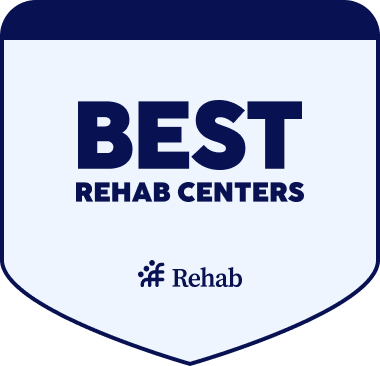
Rehab for Men: Specialized Drug and Alcohol Rehab Programs
Explore specialized rehab for men that understands the unique pressures, roles, and expectations you face in everyday life. Learn how top-rated men’s drug and alcohol rehab programs use evidence based therapies, peer support, and step by step levels of care to help you safely detox, rebuild your mental health, and sustain long term recovery.
Best Men's Rehabs for Drug & Alcohol Addiction
| Name / Address / Rating | Description | Treatments / Payments / Programs | Review / Contact | Images |
|---|---|---|---|---|
1
Top 10 in Program For Men
| Soberman’s Estate, located in Cave Creek, Arizona, is an alcohol and drug rehab center that provides addiction treatment services to adult men, professionals, and public figures. They are a discrete, luxury rehab for individuals aged 30 to 80 years old. This location caps their treatment center at ten men at a time. Soberman’s Estate focuses on | Treatments Programs Payment Options | Soberman’s Estate was everything I needed for my recovery. The staff, the program, physical activity and culinary experience were top notch and essential. The program is well designed and worked better than I expected. The staff is remarkable – professional, considerate and genuinely caring. My time there and being removed from alcohol for five weeks was everything I needed to remove my craving for alcohol. Soberman has changed my life in ways I never could have imagined. I feel confident, secure and grateful for my new life. I have reconnected with my family and friends. Thank you Soberman.
George B.
2 months ago
Yes, very professional staff, treatment, therapist, chefs were good! even the home cook did the best she could, and loved the horses of Course! Saturday morning hiking was fun to explore the trails of the nearby mountain area!
John E Williams
2 months ago
I had a great experience overall and would recommend it to anyone wanted to jump start their sobriety!!
Kevin Crawford
2 months ago
| 
5 5 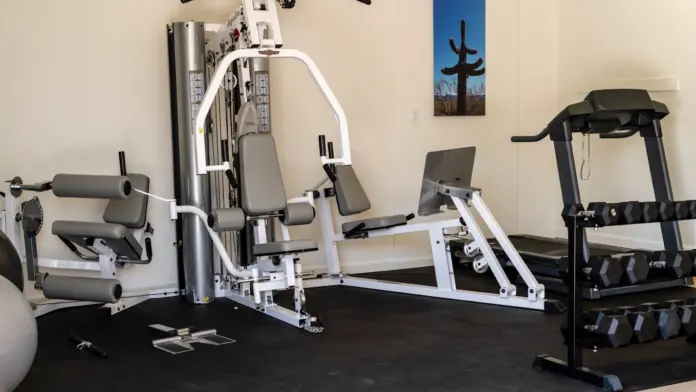



|
2
Top 10 in Program For Men
| Avenues Recovery Center in Clarksville, Indiana, is an inpatient drug and alcohol detox and rehab center. They strive to provide individuals receiving treatment with a loving environment and attentive medical care. You’ll be away from toxic environments and triggers and have the opportunity to focus on developing life skills that will support you | Treatments Programs Payment Options | at avenues i learned not too move so quickly. That Rome was not built in a day, and that you have too learn to crawl before you can walk.
Justin
1 day ago
This place is awesome!! My case manager Trent really went all out to make sure my after care was what I wanted. Also the bhts was on point with taking care of whatever was in their reach to make shit easier. (Stephanie, Jen, Chuck, Mike, Lonnie, Gonzo) I recommend this place to anyone is truly ready to change their lives and willing to do whatever it takes!!
Alla
2 days ago
This place is amazing, they will show you how to redirect you life for the better. Don’t knock it until you have tried it
Courtney Weaver
1 week ago
| 
4 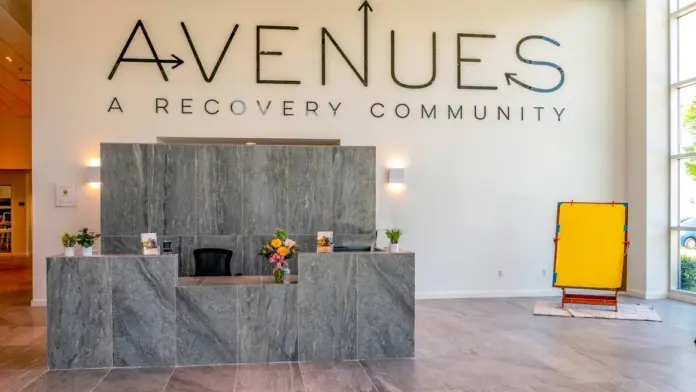

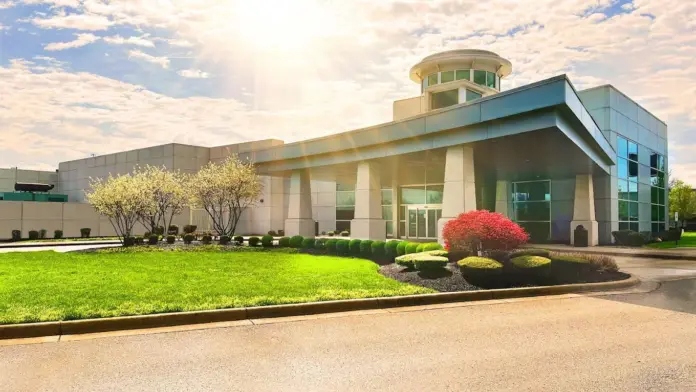
|
3
Top 10 in Program For Men
| All In Solutions Detox in Simi Valley is one of the best ranked inpatient detox facilities in California providing safe, medically supervised care for individuals beginning their recovery from drug or alcohol addiction. As part of the All In Solutions Behavioral Health network, this facility serves as the first step in a full continuum of care. Cli | Treatments Programs Payment Options | Excellent staff and service. Very comfortable experience. Highly recommend. The support here is amazing.
Cody Knight
1 week ago
Great staff every one is nice and treats everyone with respect great environment and energy
Ramon Ruiz
1 week ago
I had a great experience love this place they got me on the right track! Great staff and great med team! ♥️♥️
Rachel Luna
2 weeks ago
| 
5 5 


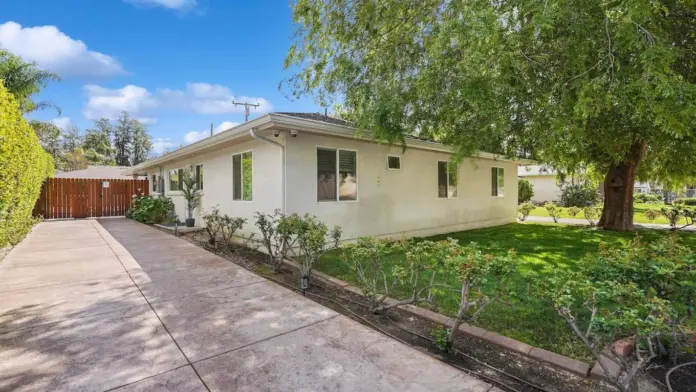
|
4
Top 10 in Program For Men
| Symetria – Hurst Outpatient Rehab and Suboxone Clinic in Hurst, Texas, is a private drug rehabilitation clinic for adults. One of the best outpatient rehab centers in Texas, Symetria offers various withdrawal medications to help clients get started with their recovery journey. You’ll also have access to treatments such as the intensive outp | Treatments Programs Payment Options | Symetria is unbelievably amazing!!! The Hurst staff is phenomenal!!! I can’t imagine that another location has a better staff. A special shout out to Deborah, Benjamin, and Samantha of course. You all are doing amazing, amazing, selfless work. You all are very special to so many!!!
Vernon Godsey III
2 months ago
Huge shout out to the team at symetria who make me feel like family I appreciate everything they do and huge shout out to Osagie for helping me! He is AWESOME!!! I love you symetria❤️❤️❤️
Chloe Roseman
2 months ago
BEST PLACE EVER. I have tried various other doctors/clinics and none of them even begin to compare to this one. The staff here is absolutely amazing. I can’t even make a single complaint. Dr Son is the best as well. He explains everything and you truly feel like he understands you. I can proudly say this, this place saved my life. If you or someone you know needs help getting off opiates do it right the first time and come here. You won’t be disappointed. If you are specifically struggling with fentanyl please don’t waste your time with other ways. I have tried 6 other methods from lazer therapy to having the earpiece to suboxone. Methadone is the key to our current fentanyl crisis. This clinic makes recovery possible again!
Mason
2 months ago
| 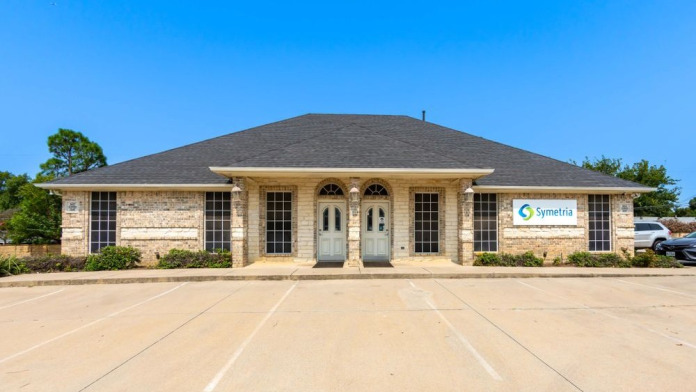
5 5 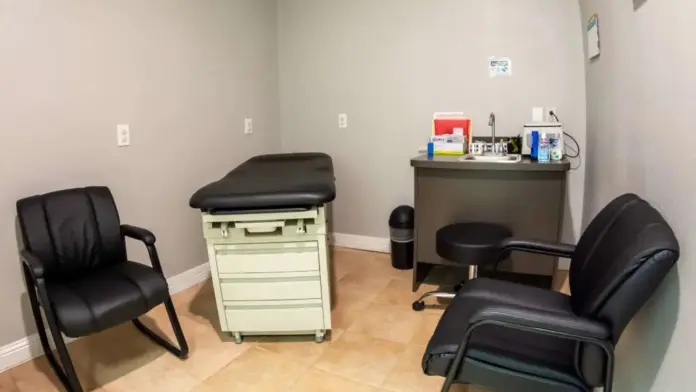
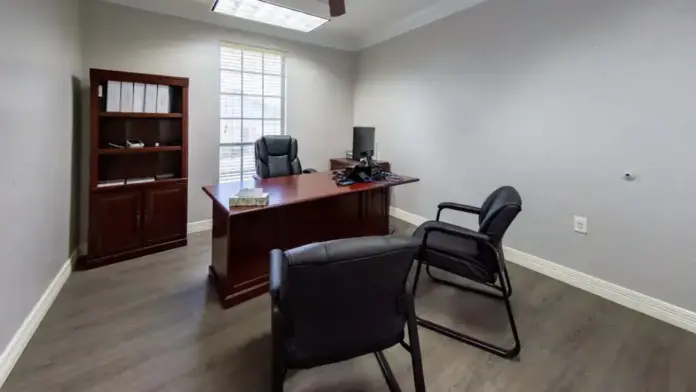
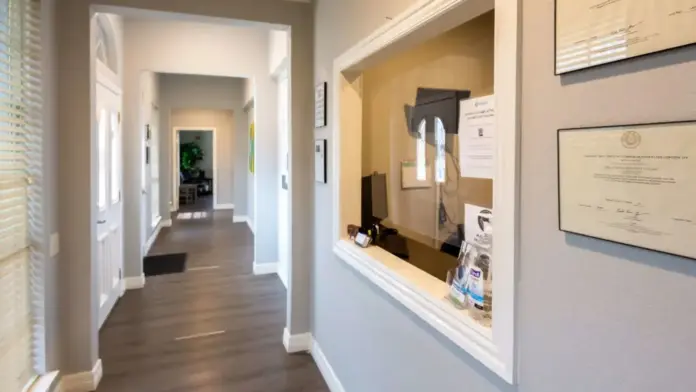

|
5
Top 10 in Program For Men
| All In Solutions Counseling Center is a mental health center and addiction treatment program in Boynton Beach, Florida. They provide a partial hospitalization program, an intensive outpatient program (IOP), an outpatient program, medication-assisted treatment, and mental health care for adults with substance use disorder. All In Solutions Counseli | Treatments Programs Payment Options | All in was a great program! The staff was amazing. Very helpful in my recovery! They were very attentive.
Mike Garcia
1 week ago
This place helped me when I felt like no one could, 5 stars to the techs, 5 to the therapists, and 5 to case management will love you guys for ever.
kyle Buchmaier
1 week ago
My experience at All in Solutions was absolutely the best it could be given the situation. The staff were absolutely amazing. With this course of recovery I’ve been given the keys for a bright future. It’s up to me to put my training to work in in my life.
JoJo Monte
2 weeks ago
| 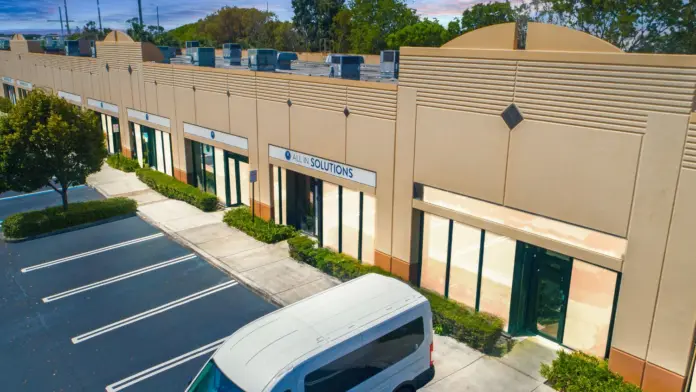
4 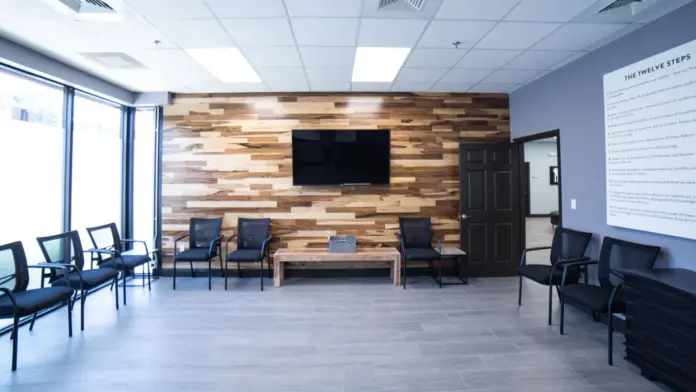
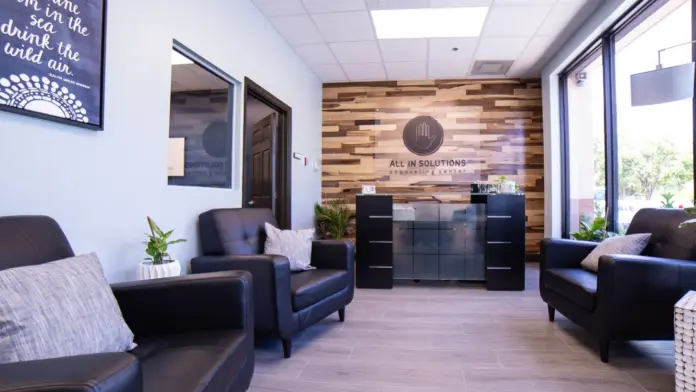
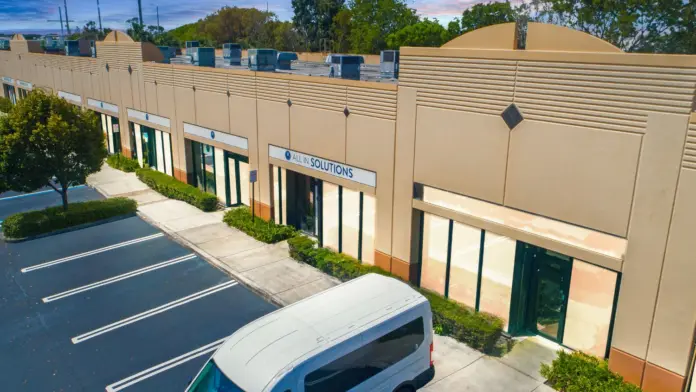
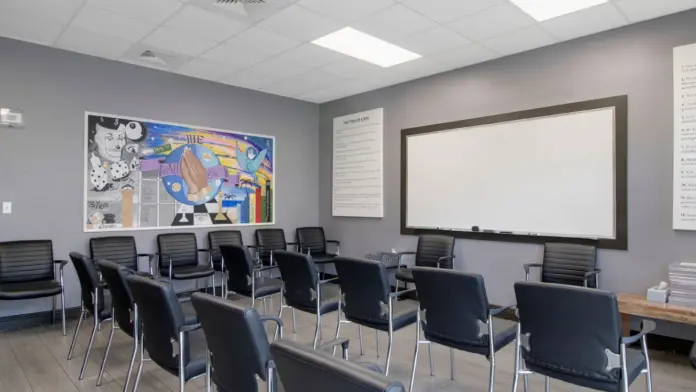
|
6
Top 10 in Program For Men
| Boca Recovery Center – Galloway is a drug and alcohol rehab in Galloway, NJ. They provide inpatient addiction treatment and medical detox. Boca Recovery’s New Jersey Drug & Alcohol Rehab, located in Galloway, New Jersey offers residential addiction treatment, medical detox, and medication-assisted treatment in an immersive treatment s | Treatments Programs Payment Options | Staff a Boca rehab are very caring to your needs my experience was amazing through out my recovery
Wal Williams
1 week ago
I went to Boca for detox and a short rehab stay. I can’t say enough about incredibly helpful and caring the staff was. Special shoutout to Mikaela, one of the therapists there and all of the techs and nurses. They guided and helped me along my journey to recovery.
Brian Marchioni
1 week ago
I have never been in any treatment facility for my addiction and I am so grateful that I was sent to Boca. I was scared and nervous about being away from home but I was immediately put at ease by the staff. I had no clothes, Bridget came to my rescue with clothes. Sissy, the housekeep, loved on me like a mother with everything I needed to build my self esteem. Ashley, my Therapist, gave me so many tools to not pick up again and assisted me with many coping skills. Brianna, the case manager, assisted me with all things FMLA and pay related with was great because I didn’t know where to start. The chefs, Joseph and Tyron fed me amazing meals to regain my strength and stay healthy. Kevin, the alumni coordinator, has given me his direct contact in case I need anything sobriety related. Overall this has been a life changing experience for me and I am grateful to have had this opportunity and I know that I have truly made life long friendships at Boca.
Sara Loper
4 weeks ago
| 
7 7 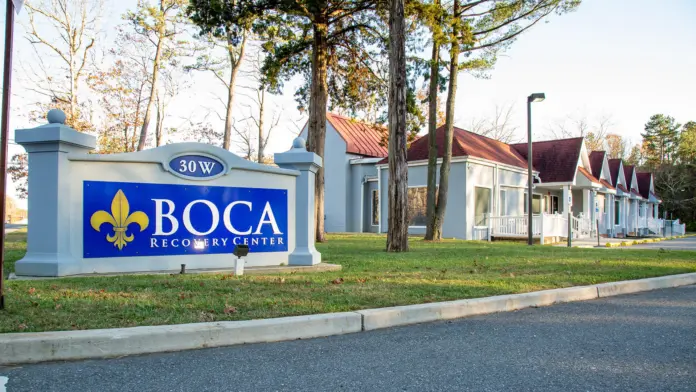
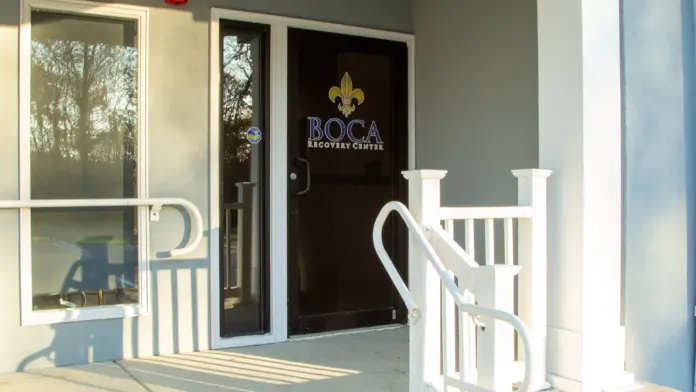
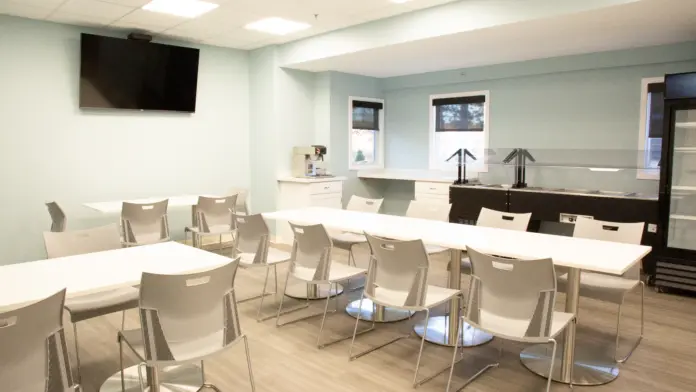

|
7
Top 10 in Program For Men
| The Boca Recovery Center is a luxury alcohol and drug rehab center for adults in Bloomington, Indiana. They specialize in cutting edge addiction treatment provided in a residential setting. One unique part of this alcohol and drug rehab in Indiana is the peaceful, secluded setting. If recovering in a clinical hospital setting doesn’t sound very a | Treatments Programs Payment Options | Its a great place
Andrea Youngblood
1 month ago
I had a wonderful experience at Boca recovery center they helped me with a lot of things, they gave me a lot of tools and resources that I currently continuing to work with.They have helped me in my recovery journey as I continue to be mindful of my triggers to prevent relapse. To all that are reading this may God of the universe continue to guide you on your recovery journey as well Amen! ☺️🙏
Diamond Louis
1 month ago
Staff was amazing. Very comforting and friendly. Made me feel at home while going through a difficult time. Thank you Boca Recovery Center
Mandy Jo
1 month ago
| 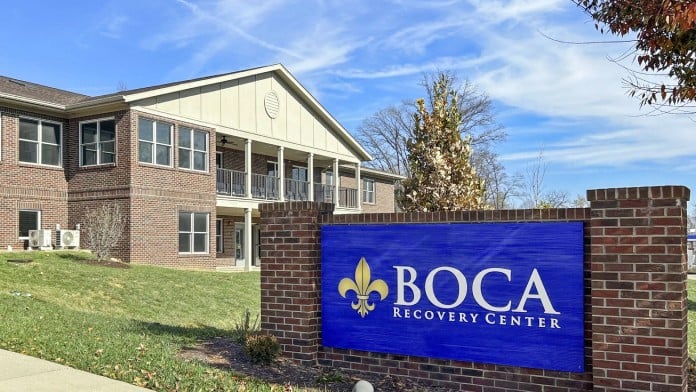
6 6 
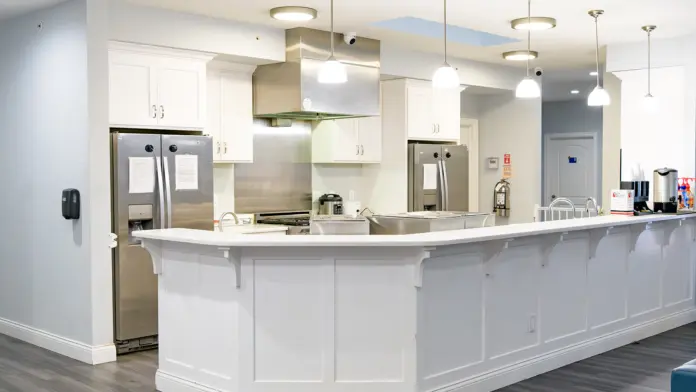

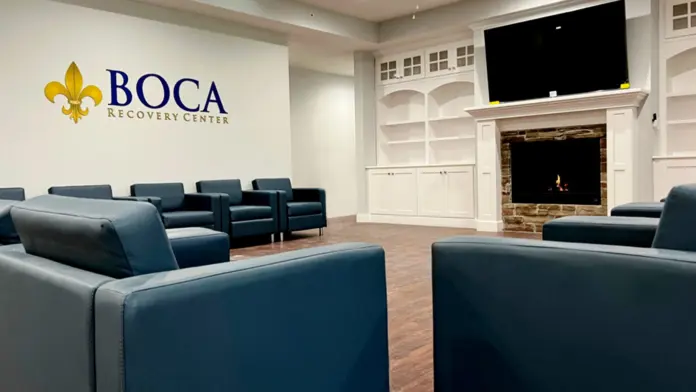
|
8
Top 10 in Program For Men
| If you’re looking for a Christian-based men’s drug rehab center, S2L Recovery in Woodbury, Tennessee, might be the place for you or your loved one. Located at the top of Short Mountain, and overlooking the green hills of Middle Tennessee, this residential and detox clinic boasts a one-to-one staff/patient ratio so there’ll always be someone t | Treatments Programs Payment Options | Coming from Canada, I was hesitant. But God knew that S2L was exactly where I needed to be. At 64 years of age, I was able to discover my true identity, purpose, and mission in Christ. They help you in trying to get clean and sober for sure. But what S2L and the staff are all about is the Gospel of Jesus Christ. That’s why it is so successful.
TIM TANNER
2 months ago
I’ve had the privilege of seeing the life-changing impact this ministry has on countless men & I can’t recommend it highly enough! God has His Hand on this ministry & I’m honored to see the Lord work in these men!
Hunter Stanfield
2 months ago
Come here with a open mind and heart. It can and WILL change your life in all ways. Trust the process and trust God! Could go on and on about how amazing this place, I’ll forever be grateful!
Trevor Woodard
2 months ago
| 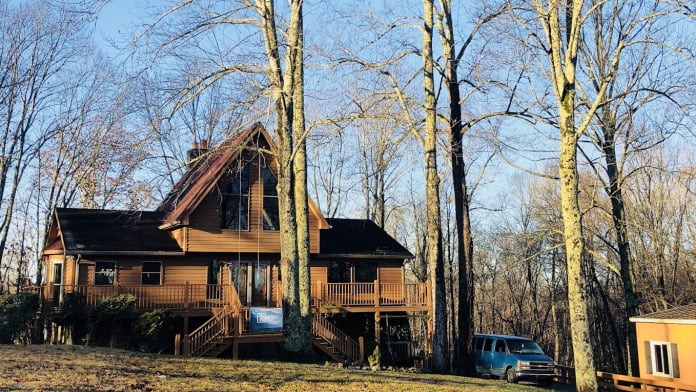
6 6 



|
9
Top 10 in Program For Men
| The Steps To Recovery addiction treatment center is situated in Levittown, Pennsylvania. At this drug rehab center, patients can expect to engage in a unique treatment approach that focuses on helping individuals recover through authenticity, intimacy, community connection, and transparency. Steps to Recovery offers a serene and private environ | Treatments Programs Payment Options | Good place, great housing
Nicole Rivera
1 month ago
Amazing support network and great staff lovely time with my stay at STR buck
William Perry
1 month ago
My experience at Steps to Recovery has been great for the most part, the people and the environment are very welcoming and comforting. I have had some issues that have come up, but they usually get resolved. My only main gripe is with some of the other clients at the community living house fail to clean up after themselves, and some do not know self control. But, the staff here is very professional and easy to talk to. I find that the opportunities here for my recovery journey are pretty good, although I’d like access to more holistic therapy resources. I’ve actually personally facilitated a Dharma meeting and will facilitate more in the future. I appreciate my time here at STR and am excited for the future with them.
Jerry Davis
2 months ago
| 
6 6 
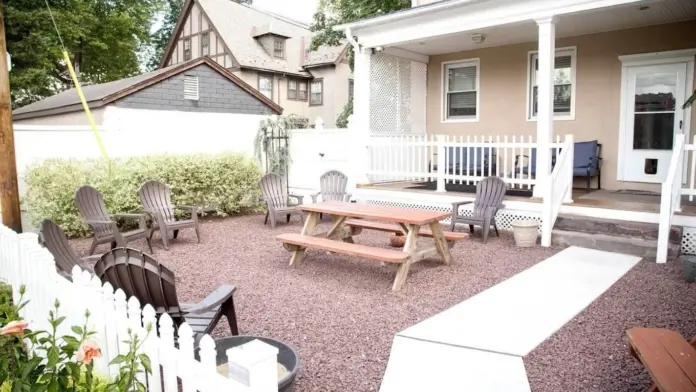
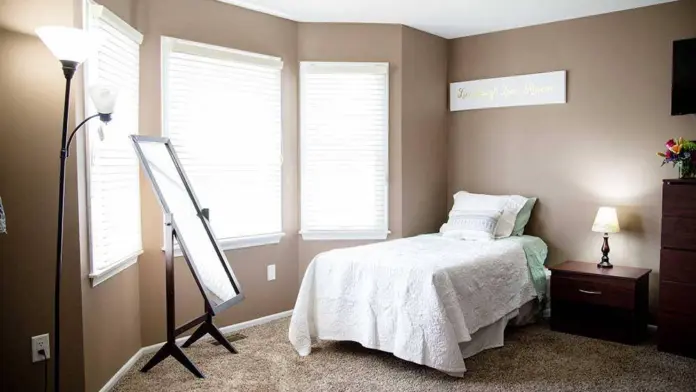

|
10
Top 10 in Program For Men
| Located in Watsonville, California, Elevate Addiction Services provides alcohol and drug rehab services to men and women suffering from addiction. Their levels of care include detox, inpatient treatment, and outpatient treatment. One of the best ranked Outpatient treatment centers in California, Elevate Addiction Services provides a wide continuum | Treatments Programs Payment Options | Our experience with Elevate Addiction Services has been truly life-changing. From the very beginning, the director, family liaisons, counselors, therapists, continuing care coordinators, house dad’s – we felt genuine compassion and care from everyone we had the pleasure of interacting with. We were kept informed of how our son was doing every step of the way. It never felt like we were alone in this. Everyone at Elevate was fighting for our son right alongside of us.
The love and compassion shown to our son meant everything. Today, he is living clean & sober, feeling confident in the tools and foundation Elevate equipped him with. Elevate welcomed him with open arms. Watching him complete the program and graduate has been one of the proudest moments of our lives.
We are so deeply grateful for Elevate and the loving and compassionate professionals who work there.
Without hesitation, we would highly recommend Elevate Addiction Services to anyone seeking help for themselves or a loved one. They helped our son find his way back.❤️
Kenny & Shelly Wright
3 days ago
Highly worth putting in the effort and money. One of the best decisions of my life was to enroll in the program at Elevate.
Jack Downer
5 days ago
Holistic approach, great staff and facilities are accommodating and curriculum for recovery is by far my best experience and healing for recovery.
Travis
3 weeks ago
| 
5 5 
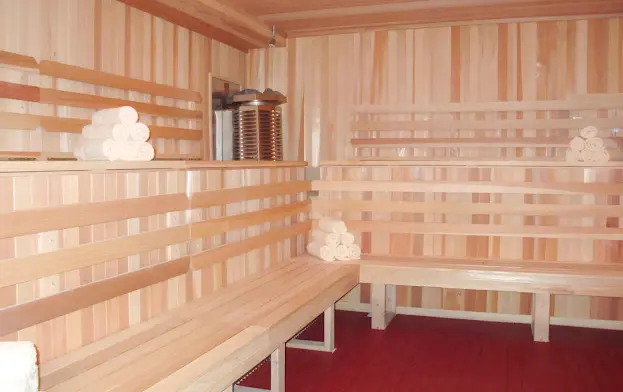

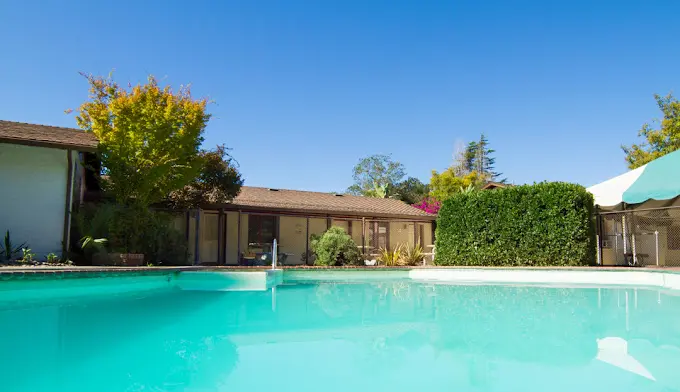
|

Addiction recovery programs and rehab for men are designed to address the specific behavioral, social and situational issues unique to the motivations and pressures men face. Statistics indicate men are significantly more likely than women to have substance use problems and seek treatment.
This article highlights how rehab works and the types of treatment available for men. Discussions on what to expect, the costs and how to pay for rehab can help you in making a decision to seek treatment.
Rehab for Men: Key Facts
Gender specific programs allow men to be more open and honest about their trauma history, social struggles and identity challenges.
Male-only programs allow exploration of love/sex addiction that may predispose one toward substance use.
Specialized services catering to LBGQTIA+, Veterans, white and blue collar, and specific ages allow men to bond with peer groups who can understand your experiences.
Men are more likely to complete a program when separated from the pressures of life via peer support programming.
What are Men’s Drug Rehab Programs?
Definition & Purpose of Gender-Specific Treatment
Gender specific treatment for men removes distractions that can arise when men associate with women. In the early days of recovery from substances, it’s not uncommon for a user to substitute their addiction with other physical pleasures.
Since the brain lacks the substances that used to provide euphoria, it naturally seeks to satisfy other cravings for pleasure. It may be food, sex, gambling or gaming. Many men erringly leave treatment prematurely due to these new habits that occur in early recovery.
Why Men Benefit From Single-Gender Care
Men are culturally conditioned to withhold personal feelings and experiences that may be related to core issues underlying substance use. A men’s only program creates safe spaces for guys to share deep hurts, fears and rage. Since addiction often creates isolation, men benefit from the comradery of other males who have the same problems.
Key Differences vs Co-Ed Rehab
Men are twice as likely to have a substance use disorder and are more apt to seek treatment, and gender specific programs are tailored to meet these work, home and other obligations. Men’s programs can address parenthood, high stress work, and the transition into adulthood or seniority.
While the psychoeducational, therapeutic and medical modalities of treatment are similar for both genders, the therapeutic environment is different when the genders are separated.
Who Should Consider a Men’s Rehab Program?
Prevalence & Risk Factors for Substance Use in Men
Statistics indicate that 22% of the male population 12 and older have tried an illicit substance in 2023. Research also indicates men are more likely to use alcohol and drugs recreationally than women, starting prior to age 12.
Men are twice more likely than women to seek treatment, but they generally exhibit worse withdrawal symptoms from alcohol. Sustaining long term sobriety appears to be more successful for men due to extended peer support.
Common Drugs & Co-Occurring Disorders
Since more men start using drugs before puberty than women, they have a higher chance of developing mental health disorders. Men are less likely to seek mental health treatment for anxiety and depression, even though they’re more likely to attend a substance use treatment program.
However, this does not mean substance abuse causes mental health disorders. Some mental health issues are caused by substance abuse, while other mental health conditions existed prior to or separately from using.
This is an important distinction when entering treatment because conditions such as schizoaffective disorder may be the reason a man started self-medicating that led to addiction, not the other way around.
For instance, attention deficit hyperactivity disorder is more often diagnosed in young men and is treated with amphetamines. However, the overuse of commonly prescribed amphetamines like Adderall and dexedrine can lead to dependency.
Self Assessment: Signs You May Need Treatment
Addiction is the consistent pursuit of a substance in spite of continued negative consequences. You may need treatment if you have consistently experienced legal problems due to drinking or using drugs, like DUIs.
Another sign is that you’ve separated yourself from everyone who cares about you to hide your use or participate in high risk activities to obtain more of the substance. In short, your life can spiral out of control and you have tried to quit but can’t.
The best way to understand if you should attend a treatment program is by talking to professionals who can conduct an assessment indicating the needed level of care.
Levels of Care In Rehab for Men
Medical detox is a brief inpatient stay in a hospital or clinic setting with 24/7 medical supervision of withdrawal and stabilization.
Medications are used to ease symptoms such as nausea, vomiting and diarrhea and to prevent dehydration. In alcohol and benzodiazepine detox, it’s essential to have medical supervision as life threatening seizures may occur.
Medication-assisted treatment (MAT) is a component of some treatment plans that may be inpatient or outpatient.
These programs use medication to reduce cravings, stabilize brain chemistry, and support long-term recovery from addiction. These programs help prevent relapse. They may begin inpatient and extend beyond into a long term outpatient treatment plan.
Residential/inpatient treatment often follows detox and extends for the first 25-45 days of recovery.
These programs offer a safe environment to learn to live without the substance in your system. They offer psychotherapy, education, recreational activities, coaching and peer support to foster a long-term recovery.
Partial hospitalization (PHP) further develops recovery skills as you integrate back into daily life.
This day program lasts 1 to 3 weeks with 4-6 hours per day of group therapy and activities to aid in developing recovery and life skills.
Intensive Outpatient programs offer 9 to 12 hours per week of group and individual therapy, usually three days for 3-4 hours.
Outpatient treatment is often the beginning of the aftercare process through meeting individually with a therapist or in a peer group. This is usually for 1 to 3 hours per week.
Sober Living & Aftercare is putting into practice daily life without drugs. Some sober houses are run by peers, or they can be part of an institutional aftercare program. These programs provide structure and discipline.
Aftercare can last as long as you want it to and can take many forms.
It generally involves a peer support program, sponsors, supportive family members, and ongoing mental health, medical or counseling treatment. The whole point of aftercare is to design a program that works personally as integration into daily life occurs.
Evidence Based Therapies for Male Clients
Motivational Interviewing
Specifically targets maladaptive belief systems about change, whether it’s easy or hard, and aids in progressing into an action plan. For men who were socially conditioned to be “stronger” or “macho” or “able to handle everything,” this process is especially helpful to understand that change is difficult, but possible.
Cognitive Behavioral Therapy (CBT)
Specifically addresses dysfunctional belief systems that lead to destructive behaviors. CBT roots out negative thinking patterns motivating emotional reactions that reinforce addiction. Men learn skills in exchanging negative thoughts for positive and constructive ideas.
Medication Assisted Treatment (MAT)
Can be the ongoing use of methadone, Suboxone or other medications to aid in preventing relapse due to cravings. It’s used mainly in opioid addiction, but other meds like naltrexone are available for alcohol abstinence maintenance.
Group Therapy
The heart of the treatment programming for recovery. By joining with other men in the same walks of life, men develop camaraderie, address similar problems, discuss experiences, and find support. Group therapy in a men’s only program is especially helpful because guys tend to be more open and honest without women present.
12-Step/SMART Recovery/Celebrate Recovery
Peer support programs have existed for over 100 years and have scientific evidence that proves they’re successful in helping maintain long term recovery. Based on a sponsorship program, these peer driven group meetings allow people to discuss their ongoing struggles, support other members seeking support, and create connections with others healing from substance use disorders.
Trauma Informed Modalities
The men’s trauma recovery and empowerment model (MTREM) has a curriculum that runs 18 weeks and focuses on psychoeducational, strength based skill building, and empowerment to manage emotional reactions.
The Moral Injury Recovery program aids in rebuilding a shattered value system to overcome shame and guilt. These and other services focus solely on addressing specific traumatic experiences through groups of peers who have similar stories.
Family & Fatherhood Focused Counseling.
Many inpatient programs have a “family week” or a specific family session as part of the program. Marriage counseling and parent/child counseling address the dynamics of a dysfunctional system and ways to reframe for healthier relationships.
Peer support programs are also available for children and spouses who have loved ones with substance use problems, such as Al-Anon (adult children of alcoholics), Alateen (teenage children of alcoholics) CoDA (codependency recovery).
Specialized Tracks Within Men’s Programs
Young adult & college age men’s programs focus on persons between 18 and 26 years old. This age group has the highest rate of use and treatment.
This developmental stage in a man’s life is critical to identity formation or, as Carl Jung taught, the age of individuation. College or trade school decisions fuel career choices, learning to manage finances and identity formation are crucial topics addressed in these programs.
Neuroscience evidence states that the brain is not fully developed until age 26. Young men who’ve misused substances since childhood may require intensive treatment to rectify the potential damage that have occurred with years of drug abuse.
Working professionals & executives’ programs for white collar professionals often target specific industries like airline pilots, doctors, nurses, lawyers and other fields of practice. Licensure boards send men to treatment before sanctioning, restricting or revoking their licenses. The stress of high profile work roles often lead men to substance use to “turn off the day.”
Veterans & first responders programs are designed to address the unique needs of this population, many of whom have experienced significant trauma in the course of their careers.
The Veterans Health Care Administration provides all levels of treatment for veterans struggling with substance use. Not all VAs have all levels, but they can refer you within their system to the proper level of treatment.
PTSD treatment has evolved over the years to include not just combat veterans but also crisis environment workers, like first responders. These treatments are designed to address nightmares, flashbacks and other symptoms that lead men to substance misuse. Pharmacological treatment is also useful for the dual diagnosis of PTSD and an addiction.
LGBTQ+ & inclusive men’s rehabs are designed to offer safe recovery spaces for gender nonconforming and non-binary persons and for members of the LGBTQIA+ community.The relationship between heterosexual men and the LGBTQIA+ male population remains strained in many societies.
As a result, it has become essential that men feel included and accepted for who they are to experience recovery from substances. Programs for LGBTQIA+ are becoming more available and accessible, providing specific inclusion peer support programming.
Dual diagnosis treatment is essential for addressing both substance use disorders and co-occurring mental health conditions.
The terms dual diagnosis and co-occurring disorders are often used interchangeably and refer to the presence of both a substance use disorder and at least one other mental health condition, such as depression, PTSD, or bipolar disorder. .
With the merger of medical and mental health systems under the Affordable Cares Act in 2010, dual diagnosis care has become an industry standard in substance use treatment.
What to Expect During Treatment
Daily Schedule & Activities
Inpatient programs and PHP provide up to six hours a day of programming. Activities include individual and group therapy, psychoeducational groups, individual study, recreational activities, and peer support.
Activities like yoga, meditation, equine therapy, aroma therapy, massage, art therapy, and sports or fitness are available at many facilities. These programs are generally available for men to select their preferences and designed to introduce recovery topics and design aftercare plans.
Length of Stay & Milestones
Length of stay in programming is determined by acuity of symptoms. Milestones in treatment include transitioning from a higher level of care, celebrating time frames of abstinence, the completion of a curriculum and other types of transitions.
Amenities, Privacy, Culture
Men’s treatment programs have a culture defined by the participants. It changes with every new person and when someone graduates or leaves prematurely. While facilities have policies, procedures and participation rules of conduct, the people are what create the culture.
HIPAA requires absolute privacy regarding the community’s participants. All men should be required to sign a privacy agreement upon admission.
There are many different types of settings for facilities. Ranches can emphasize hard work, interaction with animals, and emphasize outdoor experiences. Wilderness programs teach survival skills that can translate into identity formation. Some programs on the ocean include surfing and beach activities. Urban settings can develop life skills like using the bus system and developing resources.
Amenities are different in every environment of the facility. Some have gyms and fitness areas, cold plunges, massage and meditation rooms, aroma therapy, music therapy, and pet therapy.
Relapse Prevention Planning
is an essential component of all treatment programs. This aids in developing a vision for what life will look like after treatment. How a man re-integrates into work, family, peer support and ongoing therapy is essential for leaving an intensive program.
Men will learn how to recognize triggers, develop coping strategies for stress and learn to use naloxone in the event of an opioid relapse. Relapse has become an accepted part of the recovery process.
Costs, Insurance & Payment
Average Program Pricing
Pricing varies with facilities and is largely determined by insurance coverage. Generally, inpatient programs can cost up to $1000 a day for detox and residential treatment. Outpatient can be between $300 and $800 per day. Some programs offer free treatment to those who can’t afford the retail price. There are specific parameters for meeting the threshold of eligibility. These programs are often underwritten by the state or federal government.
Using Insurance & Governmental Benefits
Some veterans on TRICARE are eligible for treatment through VA approved providers. Governmental programs offering free services to the general public can be explored through your state’s department of health or human services. Admissions personnel in each facility can verify insurance coverage or explain what’s available for alternative ways to pay for treatment.
Other Ways to Pay
Ask about scholarships. Many accept payment plans, have partial scholarships available, and accept credit cards. The CareCredit card system is designed specifically for treatment.
How to Choose the Best Men’s Drug Rehab
Accreditation & Licensing
Facilities are licensed by the state of residence. They’re also accredited by national organizations that create safety and treatment standards. Rehab.com ranks facilities with “rehab scores.” This’ll give you an idea of the best men’s rehab in your city or state.
Staff to Client Ratios & Coverage
Staff ratios are established by the accreditation organization and the state licensing statutes. Detox ratios are generally one staff member for three patients. A general standard for inpatient residential treatment is 1:8. IOP groups run 1:10/15, and PHP will range 1:6. Some groups are run with two providers, while individual sessions generally are 1:1.
Outcome Data & Reviews
According to the National Institute of Mental Health, between 2015 to 2019, 3.7% of adult men had illicit substance use disorders. This number was greater than the national average of 3.0%. On any given day, 1.5 million people entered substance use treatment. Over half of those people had illicit drug use.
Location Considerations
Many men prefer to obtain treatment outside their communities for privacy purposes. When a man needs free services, he generally attends local facilities. Depending on the amenities a person is interested in can determine the location of treatment. Treatment is available in all states and in many other countries.
Life After Rehab
Continuing Care & Alumni
Many programs offer alumni services for maintaining recovery after discharge. These programs are designed to be a resource for persons who don’t want to readmit to full programming. Continuing care also includes the ability to check back into a facility when a person has relapsed for shorter stays than the original treatment.
Building a Sober Support System
People in long term recovery testify as to the effectiveness of a peer support system. Research has indicated that peer support systems are more effective in maintaining recovery than continuing to return to treatment over and over.
Career, Legal & Relationship Reintegration
Local social services organizations are resources for additional services in early recovery. The facility will provide information regarding local availability. Ongoing couples and marriage, or family counseling can aid in family reintegration.
FAQs About Faith-Based Addiction Treatment
Consultation with an attorney regarding custody issues is recommended for those seeking treatment. IOP and PHP programs can be strong options for men who can’t bring their children with them to treatment.
Some facilities offer “faith-based tracks” that operate simultaneously alongside regular treatment. Many hospitals that are church sponsored also have substance use programs and provide recovery housing aftercare. Most programs are Christian based. Finding programs that incorporate other religious beliefs is possible with research.
Signs that your loved one may need treatment include but are not limited to the following:
-Unexplained absences and dishonesty about where they’ve been
-Unable to attend regular work, family gatherings, or usual activities
-Continued legal consequences such as DWI/DUI’s, possession charges
-Frequent illnesses that include vomiting, diarrhea and flu-like symptoms
-Loss of housing, work, or other responsibilities
-Isolation and lack of contact with family and friends
Find Treatment Near You
If you’re ready to seek help for yourself or someone you love, you can call 988 for assistance in finding the care you need. Compassionate counselors are available just to talk through the decision making process. Your state and local departments of health also provide nearby resources for assistance in finding treatment.
You can also visit Rehab.com to find a qualified treatment provider in your area or call the helpline to be connected with a treatment provider that’s right for you. Don’t wait. Call now the number below.
Call A Treatment Provider
For a conversation about what treatment options are available to you.
Make a Call
Featured Facilities with Programs for Rehab for Men
Finding facilities near you…

